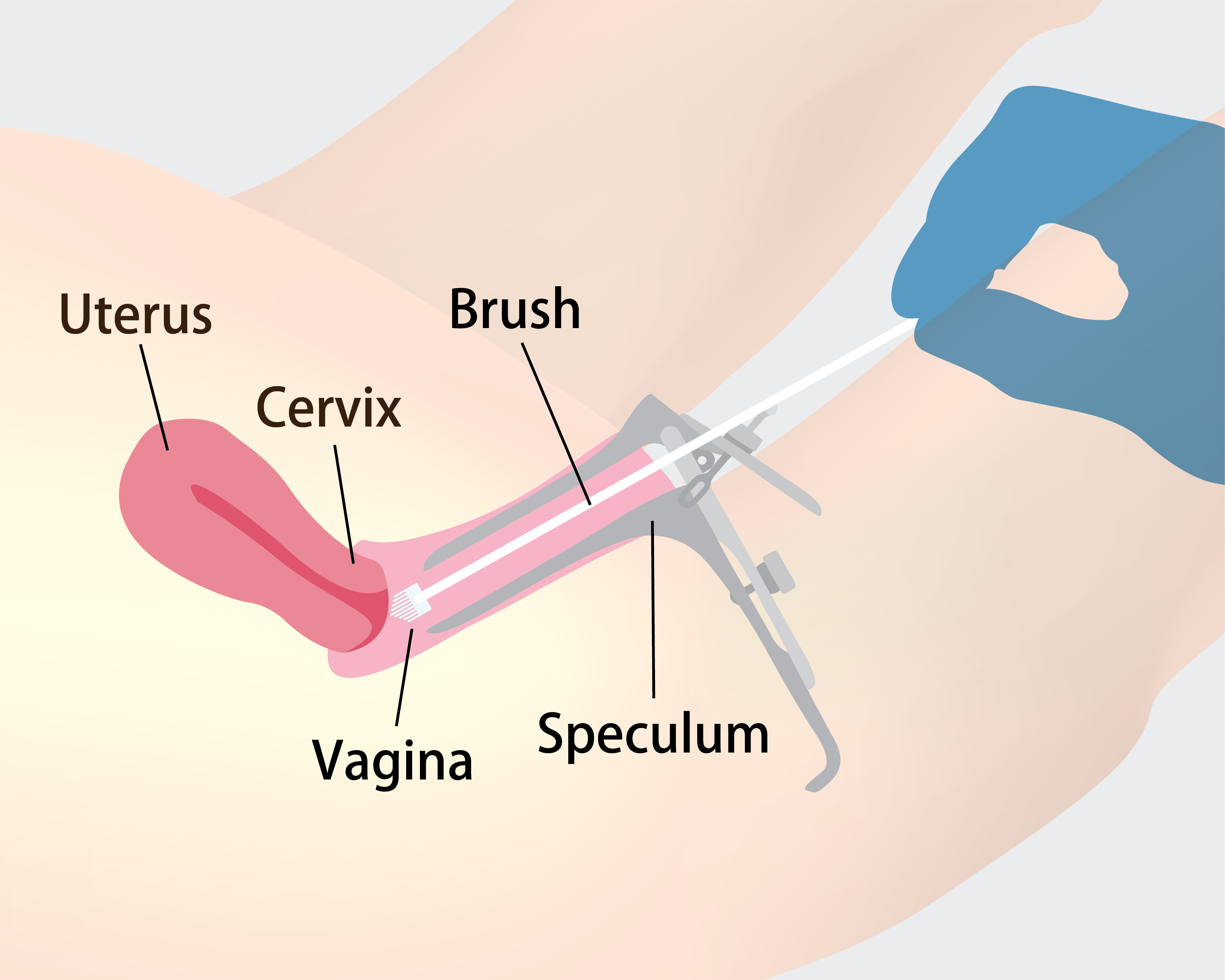
Cervical Screening
Cervical screening is a quick and simple test for detecting early abnormal changes in the cervix.
Cervix is located at the lower end of the uterus (womb). During the screening, an instrument called speculum is inserted into the vagina and then a soft brush is inserted to collect sample from the cervix. The sample will be sent to laboratory for processing.

Common screening tests for cervical cancer include:
(1) Human papillomavirus (HPV) test
High-risk types of HPV can cause abnormal changes to the cells in the cervix. The HPV test checks if the cervical cells have the DNA (genetic material) of the high-risk types of HPV. Women tested positive for HPV should undergo further triage test according to the arrangement of the service provider.
Women with abnormal results are recommended to seek doctor’s advice on necessary investigations and follow-up.
(2) Cytology test (also called cervical smear or Pap smear)
The cytology test looks for abnormal changes in the cervical cells. Abnormal cells do not necessarily mean cancer. If the test result shows abnormal cells, further investigation (e.g. colposcopy) is usually required.
Women with abnormal results are recommended to seek doctor’s advice on necessary investigations and follow-up.
You may visit Screening Targets and Recommendations for more details.
No screening test is 100% accurate, so even if your previous cervical screening result is normal, you should
- have regular cervical screening; and
- watch out for symptoms of cervical cancer and see a doctor promptly if you have any symptoms.